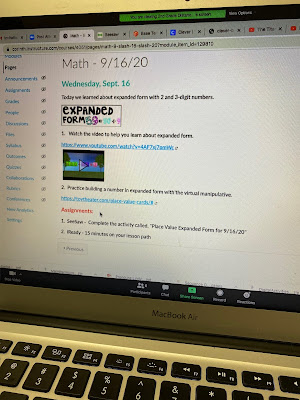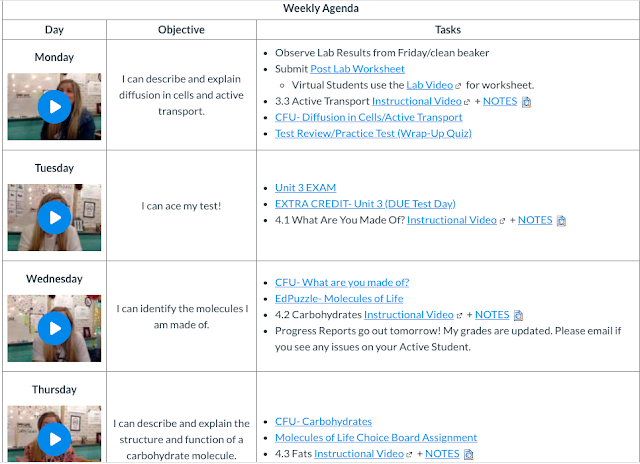Educators desperately want and need support. They need practical strategies that are not just effective but also can be developed in a reasonable amount of time. To achieve this goal, we must first examine the foundational elements that lead to successful teaching and learning, whether the environment is remote or hybrid. In no particular order, these include:
- Maslow before Bloom's (SEL considerations)
- Instructional design grounded in sound pedagogy
- Purposeful use of technology
- Leveraging a learning management system for continuity and cohesiveness
- Equity
- Continuous feedback
- Job-embedded and on-going professional learning
At first glance, one might think that there is a great deal to consider. Under the current circumstances, I would agree. That is why it is not the time to re-create the wheel and work harder. One pitfall is trying to teach traditionally under the current circumstances. Without a doubt, this will be and has been, more time consuming for educators. So, where do you begin? There are many strategies that educators were implementing well before the pandemic that hold more value now. Regardless of the terminology used, these represent more personalized pathways that focus on student agency leading to empowerment and more ownership of the learning experience.
I feel the best way to support educators is to show how it can be done under the same conditions by sharing practical examples. For the past two years, I have been blessed to work with the Corinth School District in Mississippi on pedagogy, both digital and non-digital. We have seen incredible growth in all schools across the district through the coaching of both teachers and administrators. With the foundation established last year, they were able to adapt to the current landscape quickly.
Over the summer, they really ramped up how their LMS (Canvas in their case) would be used K-12 to facilitate their hybrid learning model better. Through the lens of high-agency strategies, I will share some practical strategies that educators can implement right now as well as some examples.
Voice
Honoring kids' voices and allowing them to have a say during the learning process is a central tenet of student agency. In many cases, voice can be amplified through the cover of anonymity, which is critical for introverts and shy students. Virtual breakout rooms and digital tools allow all students to respond during reviews of prior learning, checks for understanding, closure activities, and after collaborative activities. I have seen all schools incorporate Zoom breakout rooms in Corinth but was super impressed with the pre-K teachers who used it in conjunction with Nearpod. The elementary teachers are also using both Seesaw and Canvas to promote voice.
Choice
Choice might be one of the most uncomplicated components to integrate daily, whether you are remote or hybrid. Strategies such as choice boards and playlists developed using Google tools afford students with greater control over their learning while also freeing up the teacher for targeted instruction or support. I have really been impressed with the choice boards at the high school and how Canvas is being used to set them up. The elementary school has also upped their game as of late.
Path
They are many ways to allow students to determine their own path during remote or hybrid learning. Path could come in the form of customized curriculum, asynchronous virtual courses, selecting the order in a playlist, or independent study. It allows students to progress towards standards based on their mastery levels, interests, and goals. Utilizing adaptive learning tools as part of a station rotation model or playlist provides tasks that align with individual strengths and weaknesses. I love how middle school teachers responsible for remote learners have created a virtual station rotation model in Canvas.
Pace
Pace is as simple as allowing kids to work through activities where they have to self-manage their time in order to achieve mastery. Some kids need more time while others less. Rigorous and relevant asynchronous tasks provide extended periods of time to complete tasks to reduce stress, dive deep into concepts, and prioritize learning. Self-paced activities allow all students to progress through concepts while freeing up the teacher to work with those who need the most help. The math department at Corinth High school has been using the flipped approach with Bitmoji classrooms as well as self-paced programs with a great deal of success. Students in the elementary school get to work at their own pace in various centers.
Like many school districts, learners in Corinth can choose to work remotely at home or come to school for in-person learning, reducing anxiety and stress while emphasizing health and safety. For the students participating in in-class learning, social distancing measures need to be implemented. As a result, Zoom breakout rooms have been utilized extensively regardless of where kids are learning to foster discourse and collaboration. I must say how impressed I have been to see how the elementary teachers are making this work across the entire school.
I am only scratching the surface regarding how Corinth School District educators have successfully utilized an array of high-agency approaches to personalize already this year. They have addressed the seven elements presented at the beginning of the post. Over the summer, they planned and trained staff on how to use Canvas better. After some feedback from my initial coaching visits in August, the use of breakout rooms became the norm as a means to get kids talking. Building principals and teachers working together to process and reflect on each coaching visit combined with an intrinsic motivation to improve and epitomize outcome-based professional learning goals. All in all, I couldn't be more proud of this district and what they have and will continue to accomplish.
For more remote and hybrid learning strategies and resources, click HERE.
If you are interested in having a conversation about Aspire Change EDU's professional learning solutions, including job-embedded and ongoing coaching, let me know.
















